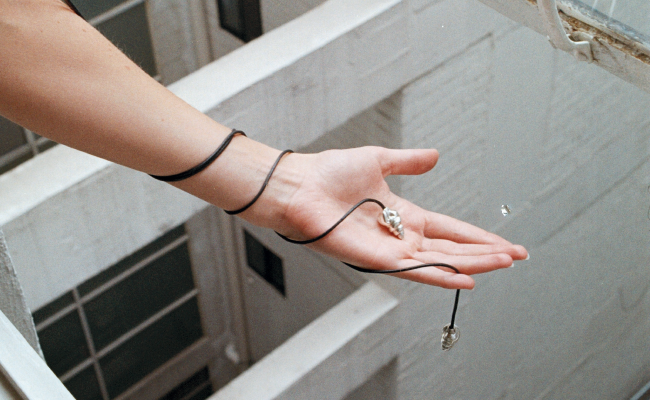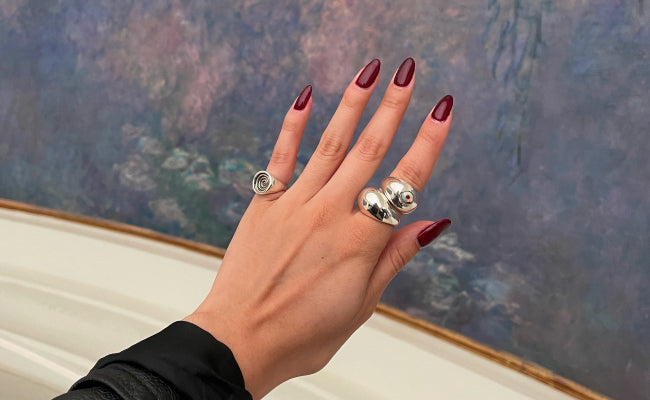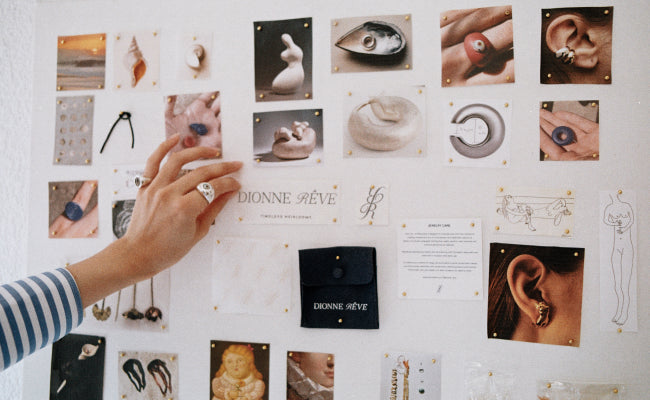Our Qualifications

At Dionne Rêve, we take pride in our commitment to obtaining the necessary qualifications to produce and create high-quality jewelry.
Our top priority is to continually enrich our savoir-faire in jewelry making, ensuring we employ the best techniques to produce top-quality pieces. Keep reading to learn more about our qualifications.
Gemological Institute of America (GIA)
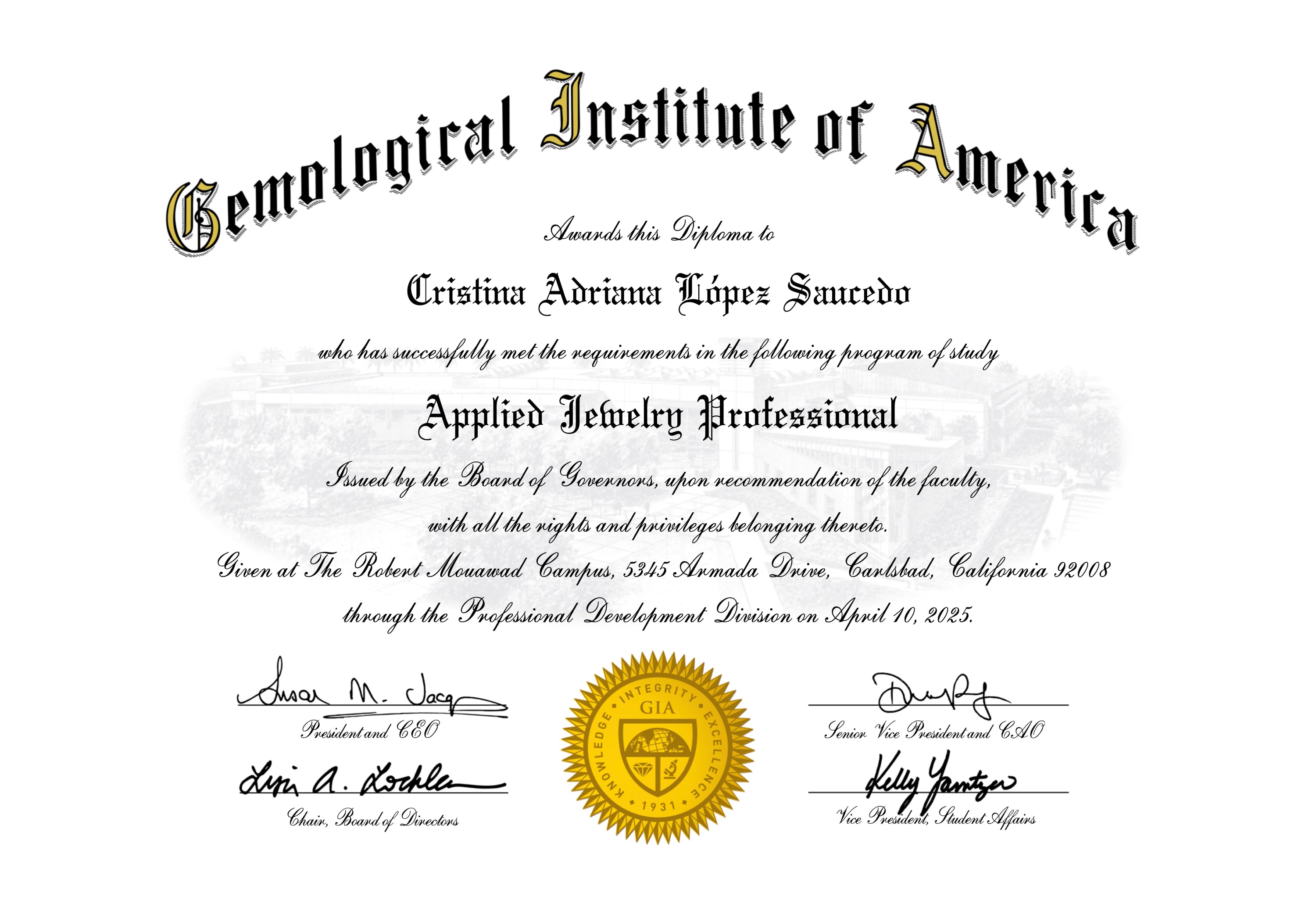
Applied Jewelry Professional Diploma (AJP)
Our designer & founder, Cristina, is certified as an Applied Jewelry Professional (AJP) by the Gemological Institute of America (GIA), the world’s leading authority in gemology. This diploma reflects a solid foundation in diamonds, colored stones, precious metals, and the key elements that define fine jewelry. It also includes training in gem identification, quality evaluation, and professional customer service.
This diploma ensures that every piece we create is backed by expert knowledge and a deep understanding of what makes jewelry truly exceptional.
View Diploma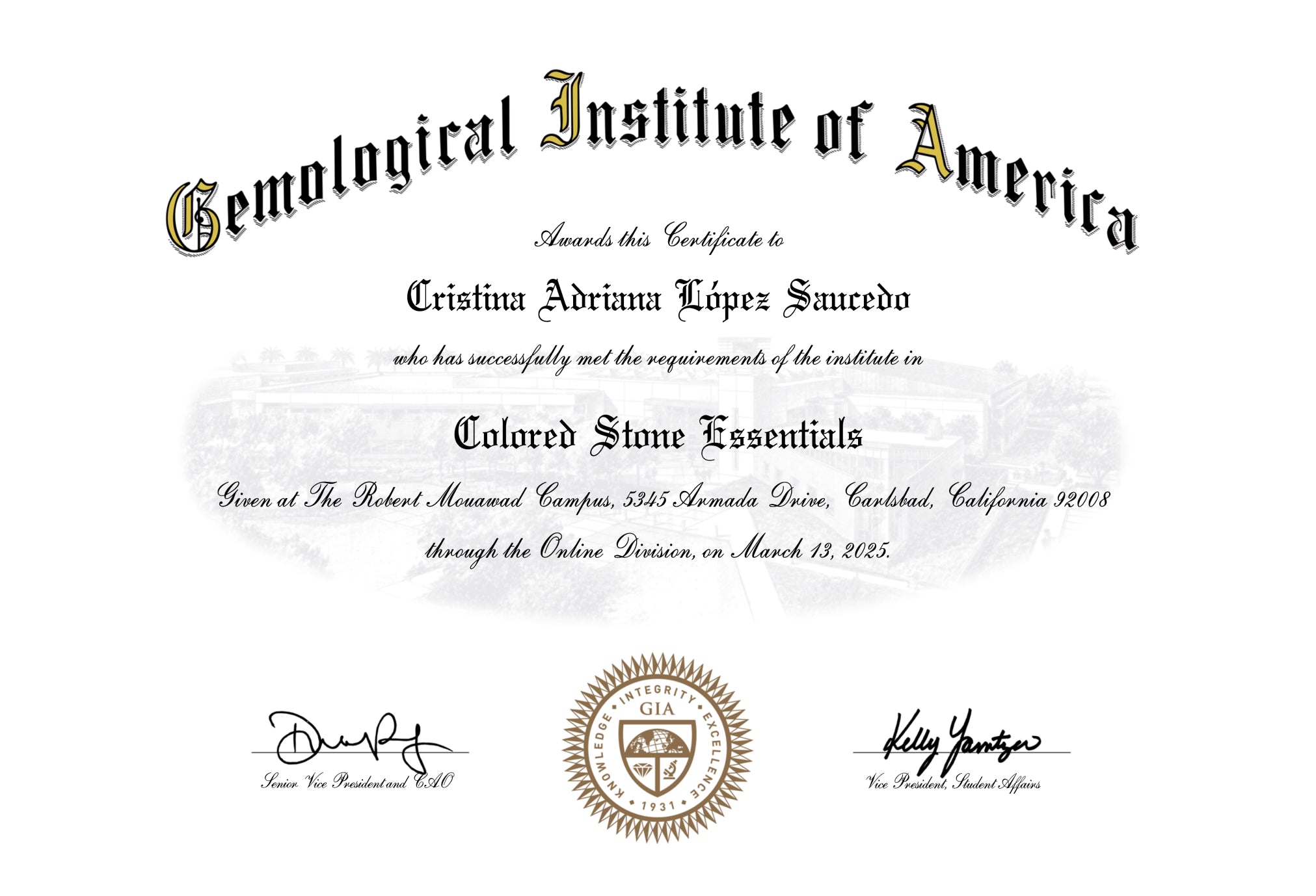
Colored Stone Essentials
This course provided basic, essential knowledge of colored stones, with an in-depth focus on the “Big Three” of the gemstone world: ruby, sapphire, and emerald. Subjects covered include the language of colored stones; color’s powerful role in gemstone value and the unique characteristics of popular colored stones; and how color, clarity, cut, and carat weight affect a gem’s value.
View Certificate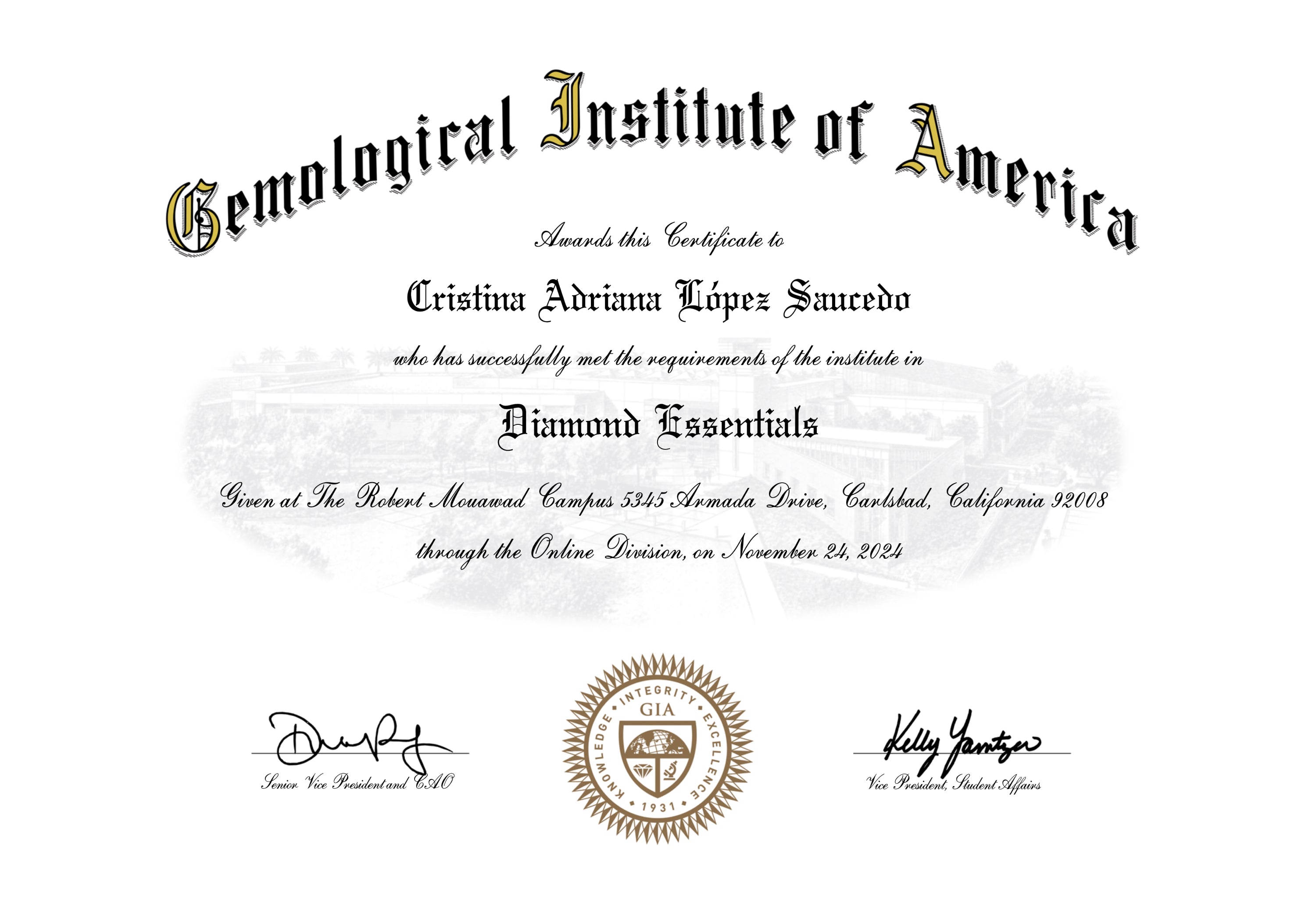
Diamond Essentials
This course certified us on how to describe diamond jewelry accurately for effective and ethical sales conversations. Overview of the GIA clarity grading system, how diamonds are graded for color, and how color affects value.
View Certificate
Jewelry Essentials
In this course, we examined jewelry’s important features and how they combine to give a piece its unique value. We also gained knowledge about the unique qualities of precious metals, how to describe them to customers, and how to identify jewelry types and styles, using industry terms to describe them. Different jewelry manufacturing methods, and how they can affect style, appearance, precious metal testing, and durability were also reviewed.
View CertificateHaute École de Joaillerie
October 2024. Paris, France.
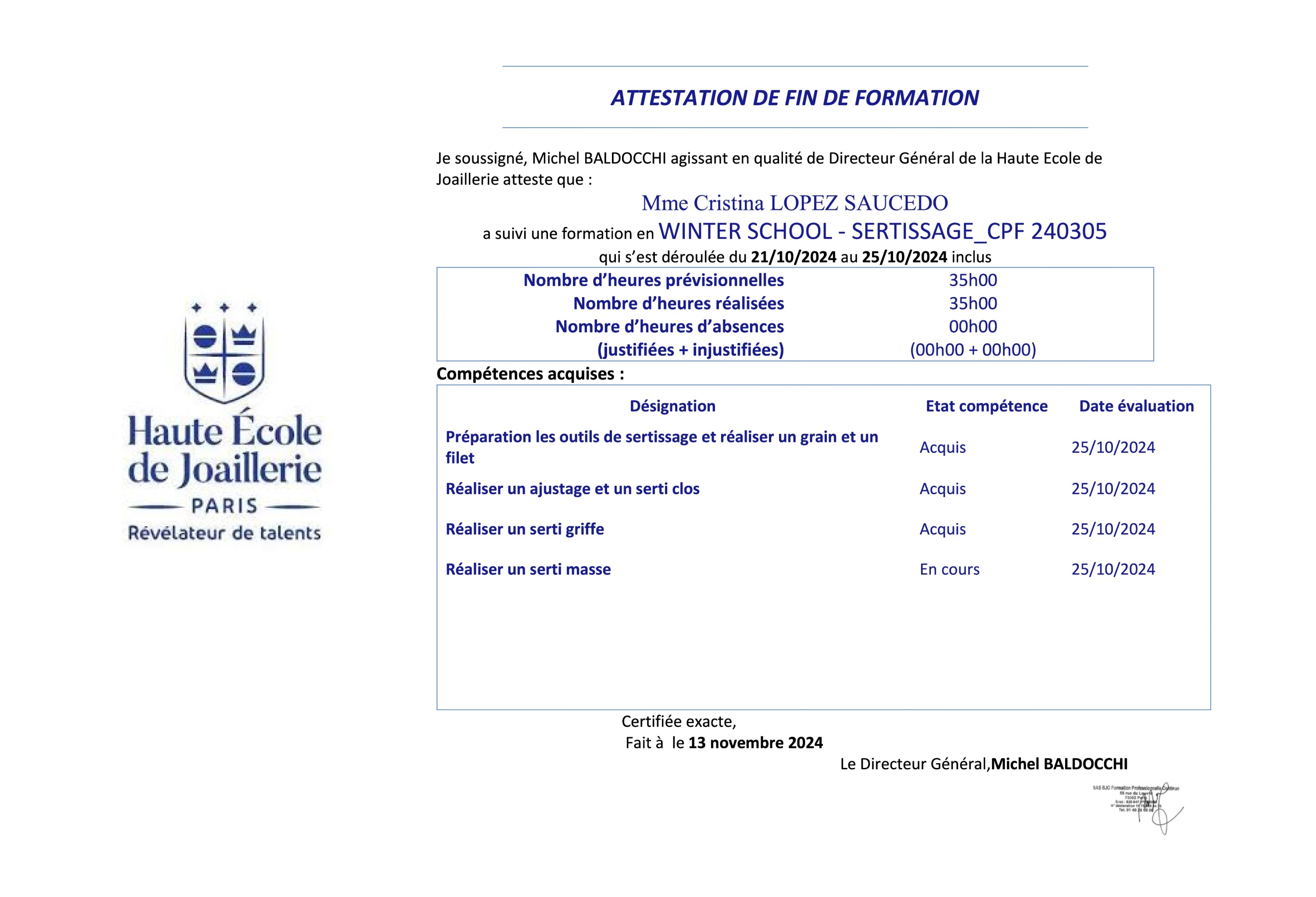
Sertissage (Winter School)
This intensive course certified us on the basic techniques of gemstone setting such as grain, pavé, bezel, prong, and cluster setting.
L'École Van Cleef & Arpels
March 2024. Paris, France
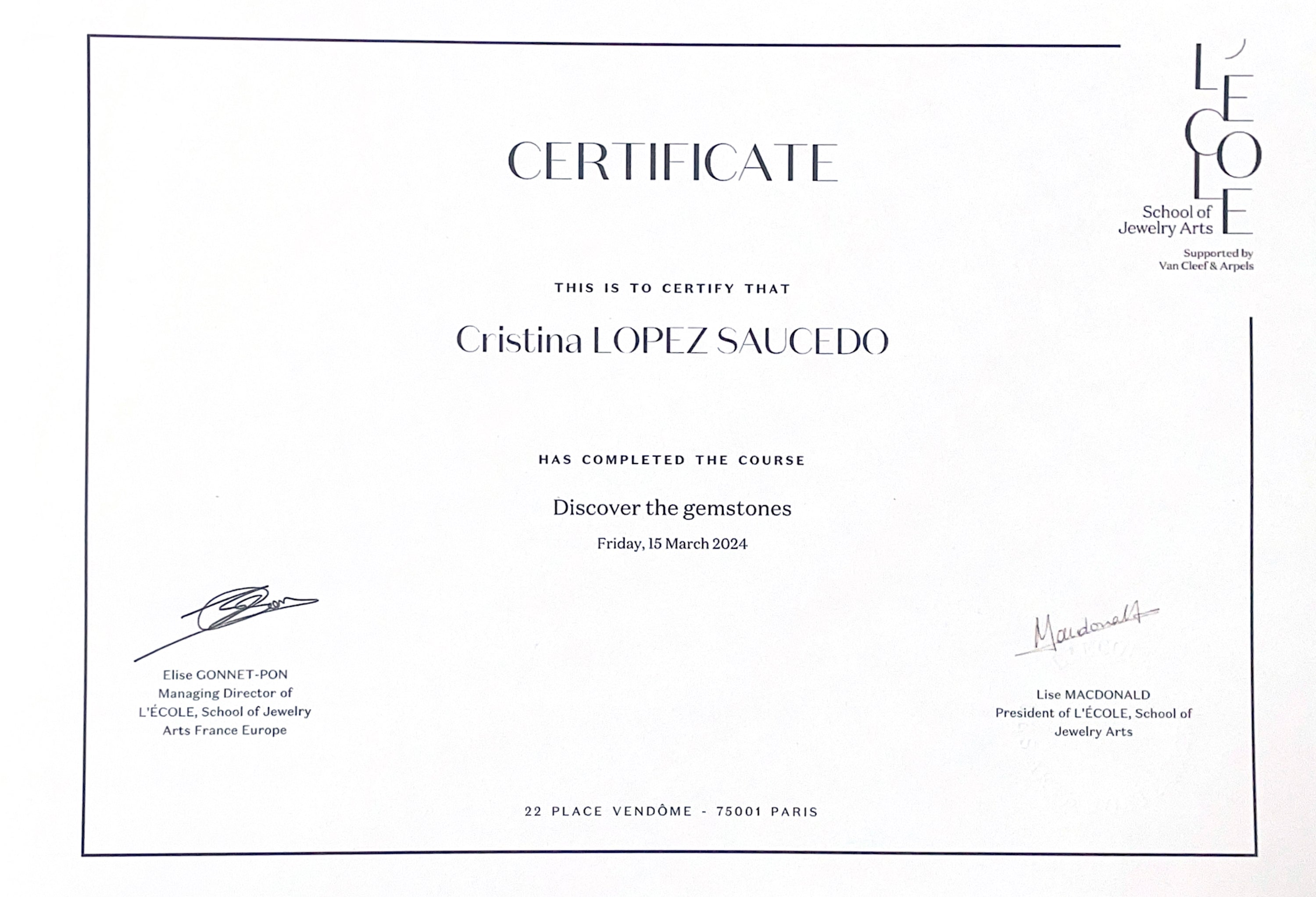
Discover the Gemstones
A course where the basic knowledge of gemology was learnt. The goal was to identify the properties and characteristics of different gemstones.
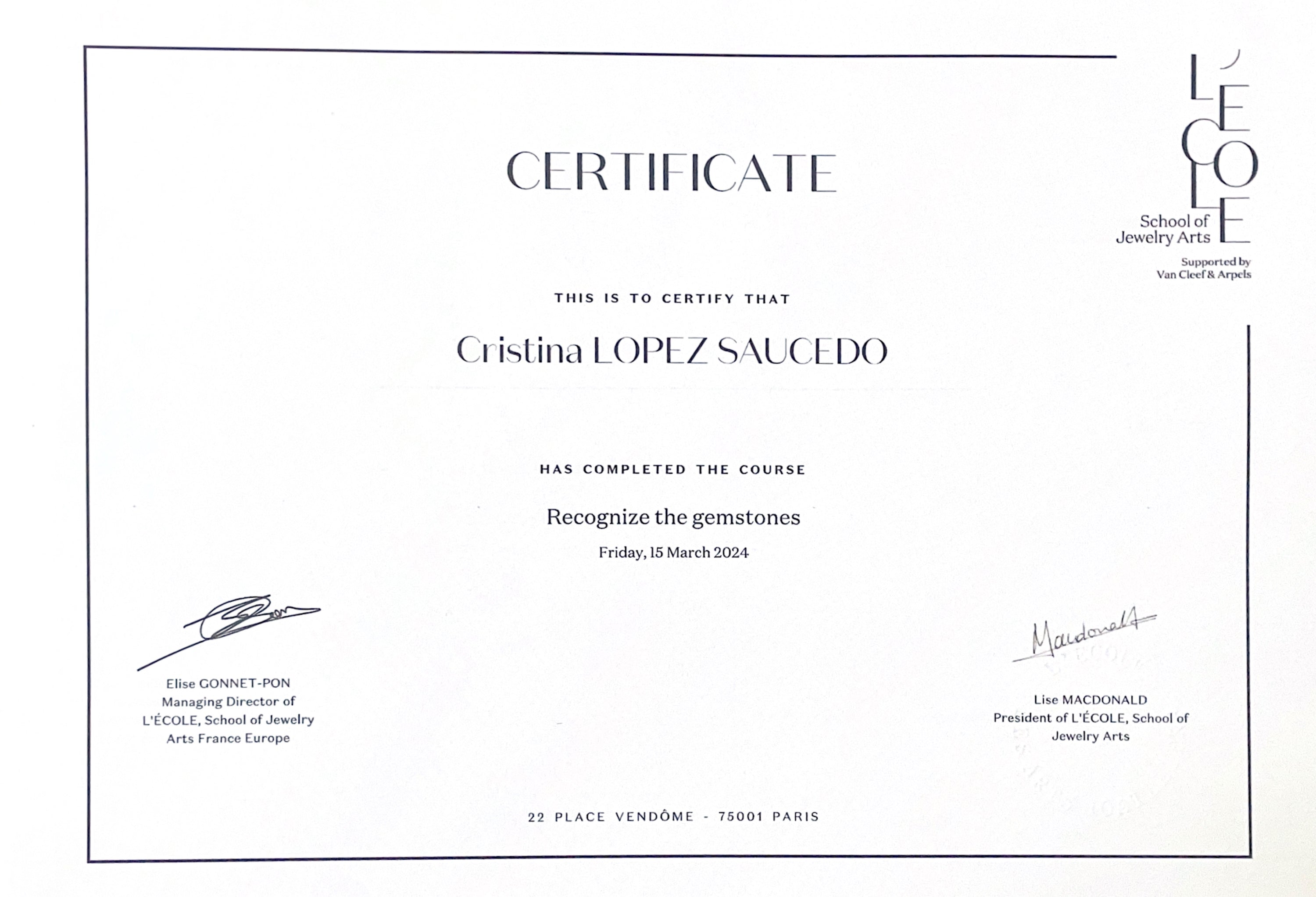
Recognize the Gemstones
In this course, we manipulated and observed precious and colored gemstones, both cut and rough. We learned to identify them using gemology tools.
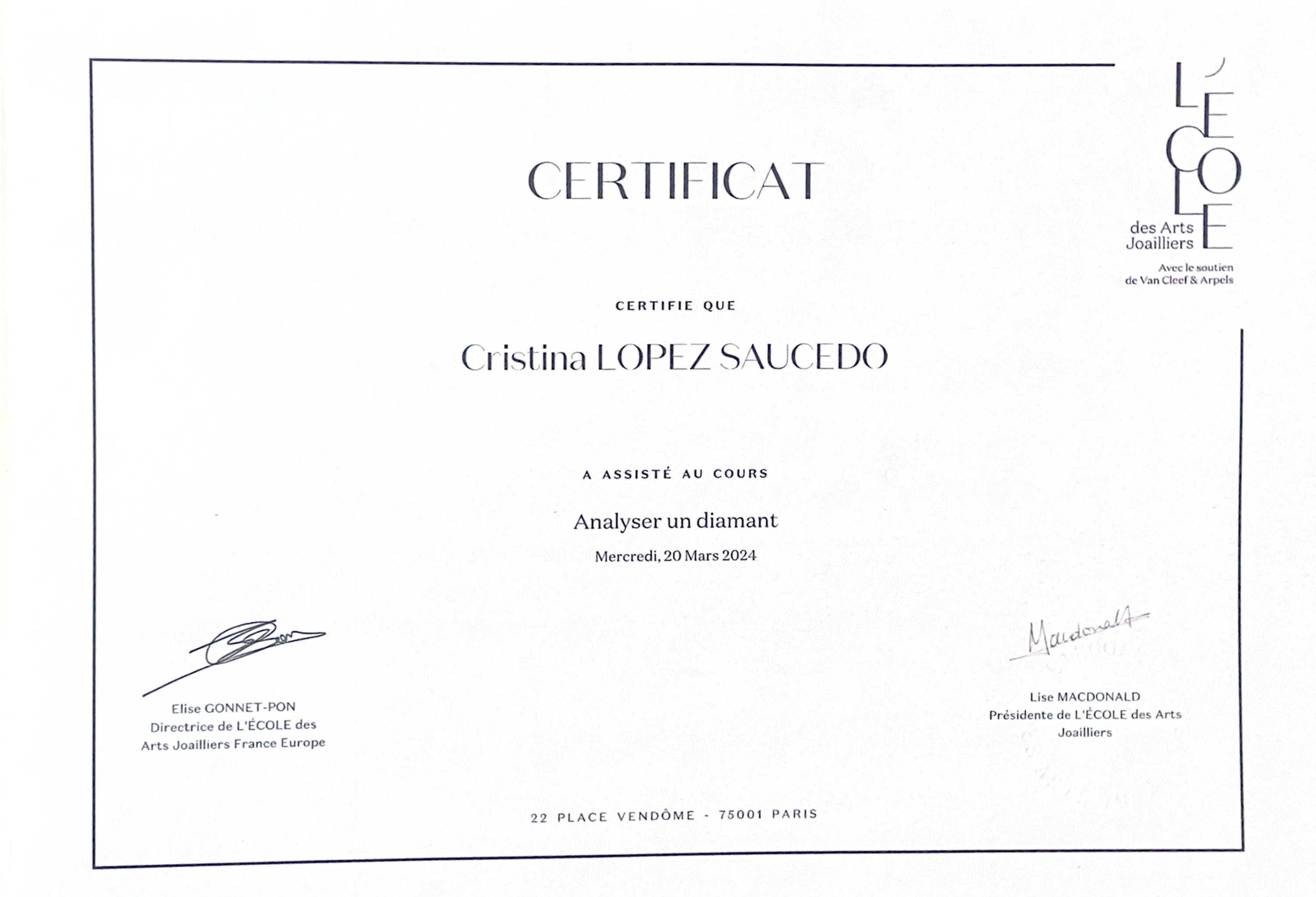
Analyze a Diamond
We observed a marquise cut diamond to determine its characteristics, according to the 4C's grading system. We measured its proportions and completed a grading report to assess the quality.
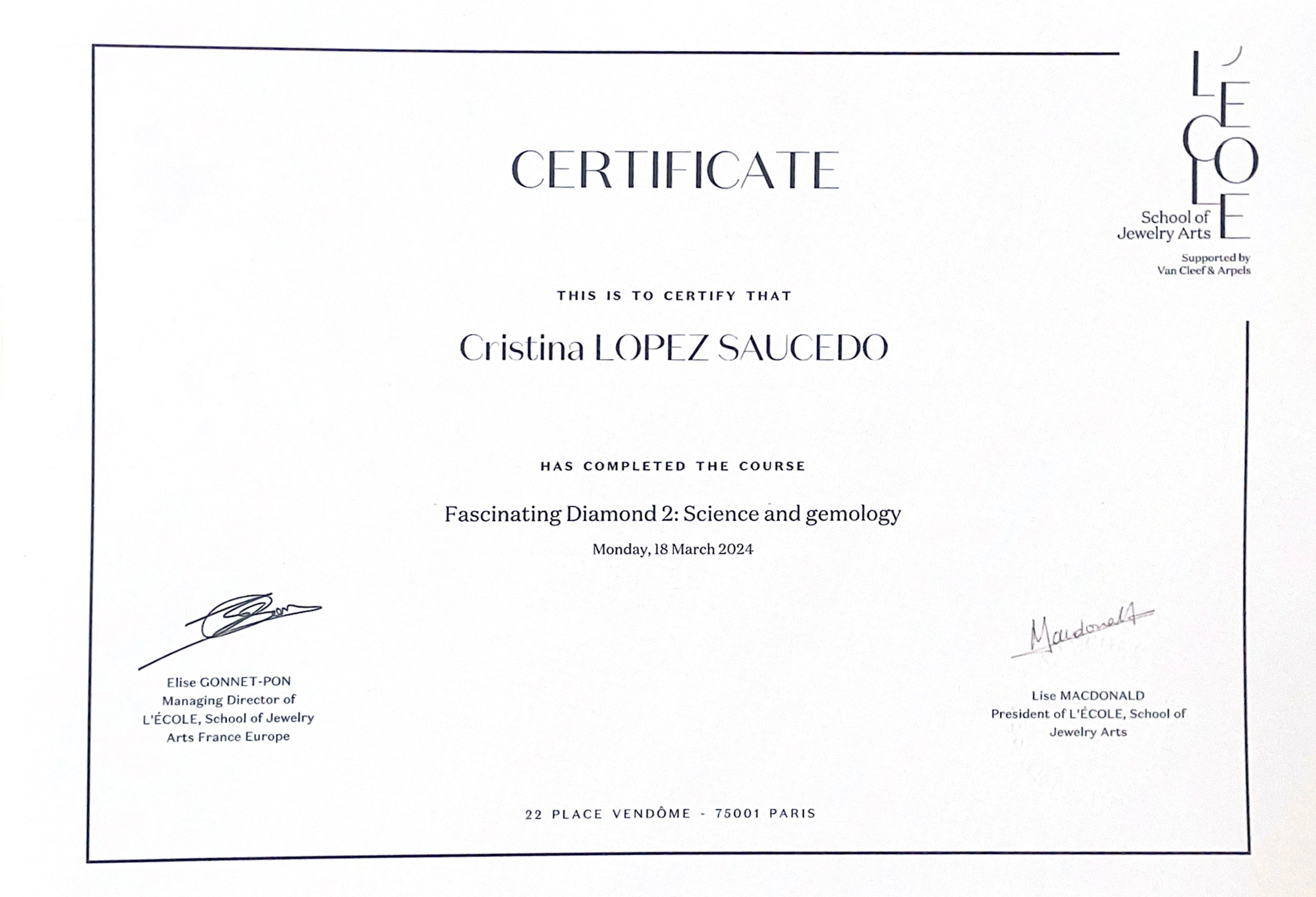
Diamonds: Science and Gemology
We learned the properties and characteristics of diamonds, revealing to us why they are so unique.
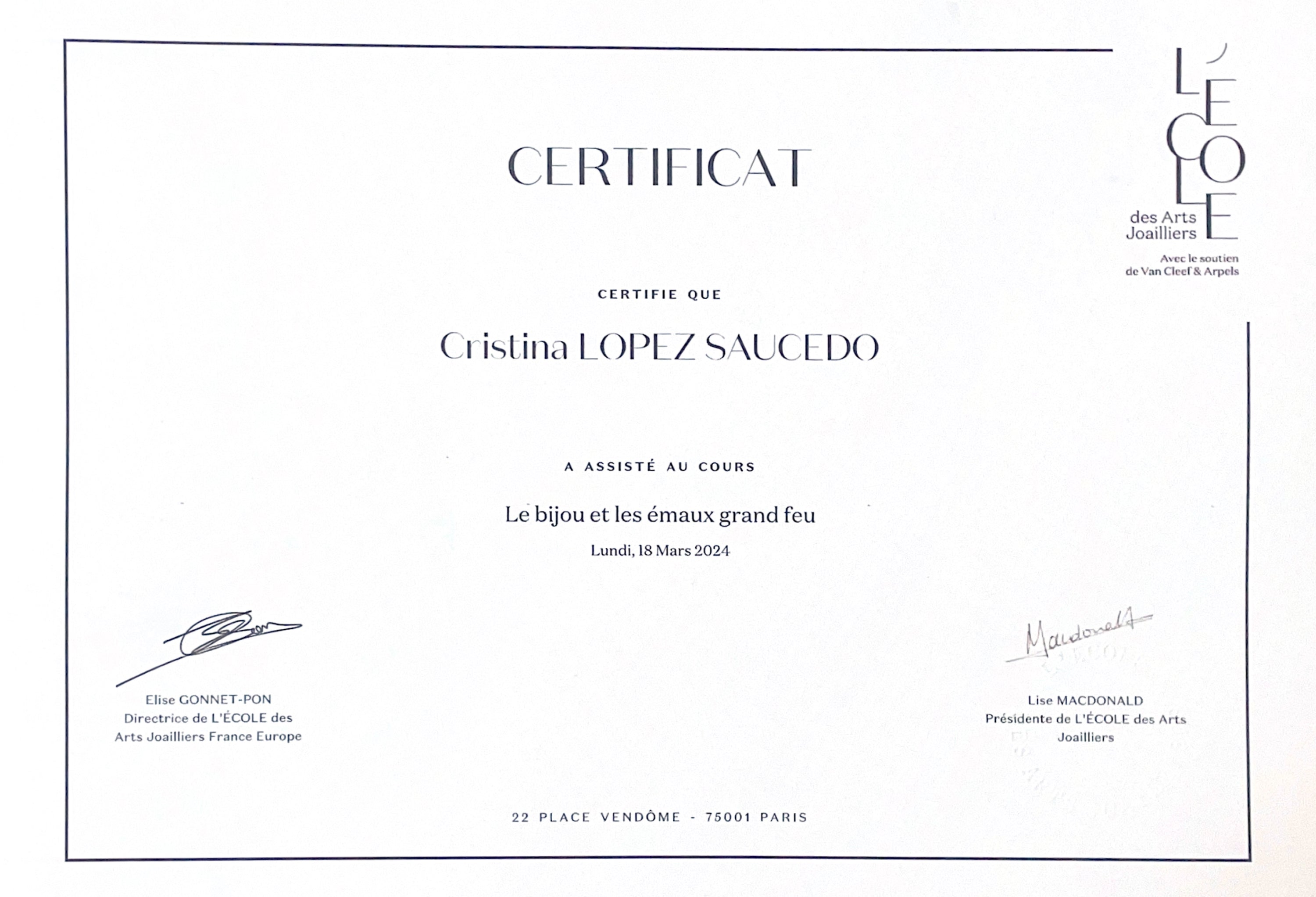
Jewelry Enameling
The technique of enamel dates back to 1300 BC. In this course, we learned the "champlevé" and "plique à jour" techniques from a master enameler.
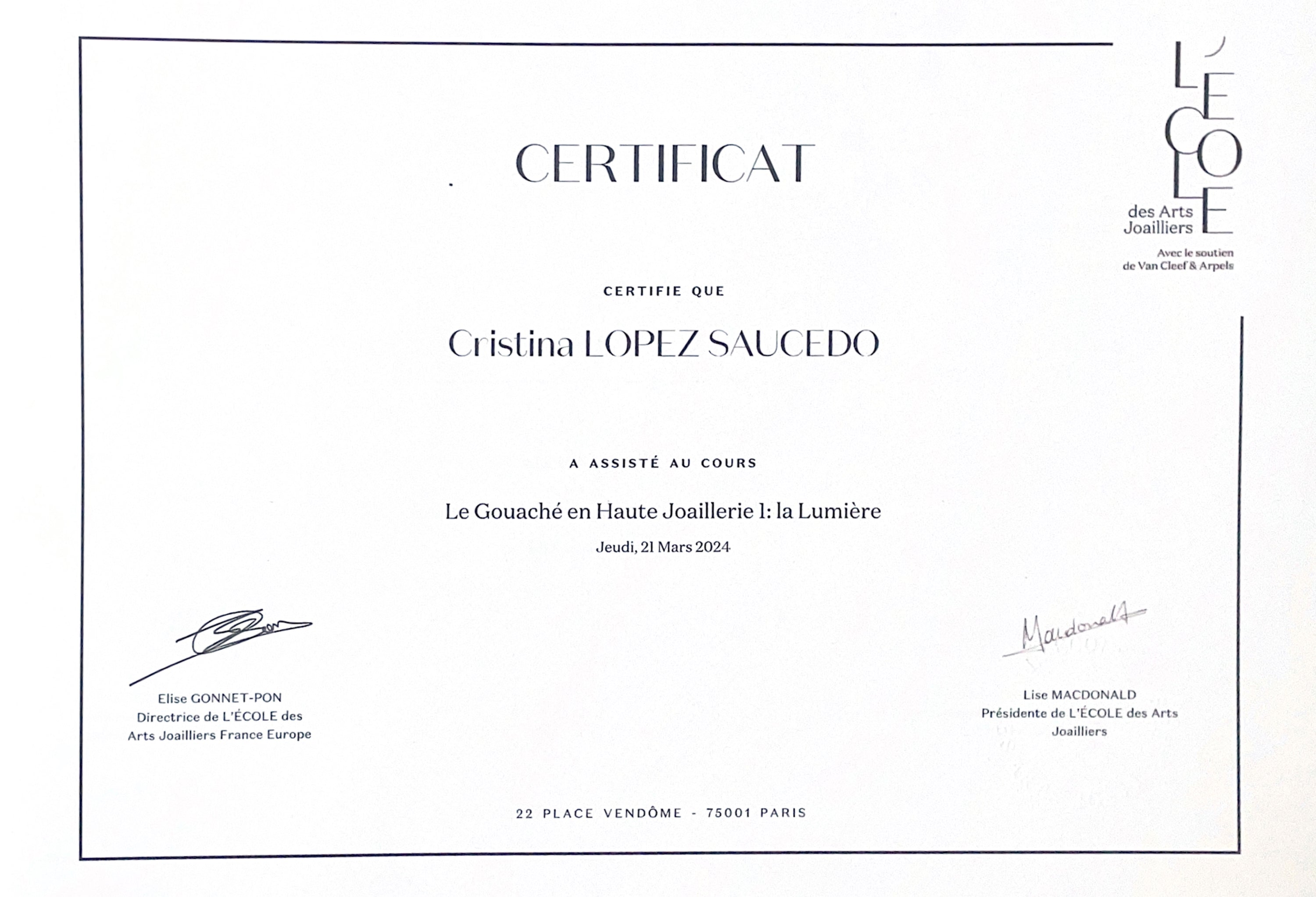
Gouaché in High Jewelry: The Lighting
Gouaché sketches are the first stages in creating a high jewelry piece. In this course, we learned how to depict the lighting.

Gouaché in High Jewelry: The Color
Gouaché sketches are the first stages in creating a high jewelry piece. In this course, we learned how to depict the color of different gemstones.

Jewelry History
Jewelry design is the first step in creating a piece of jewelry. In this course, we learned the design techniques of different jewelry designers over time.
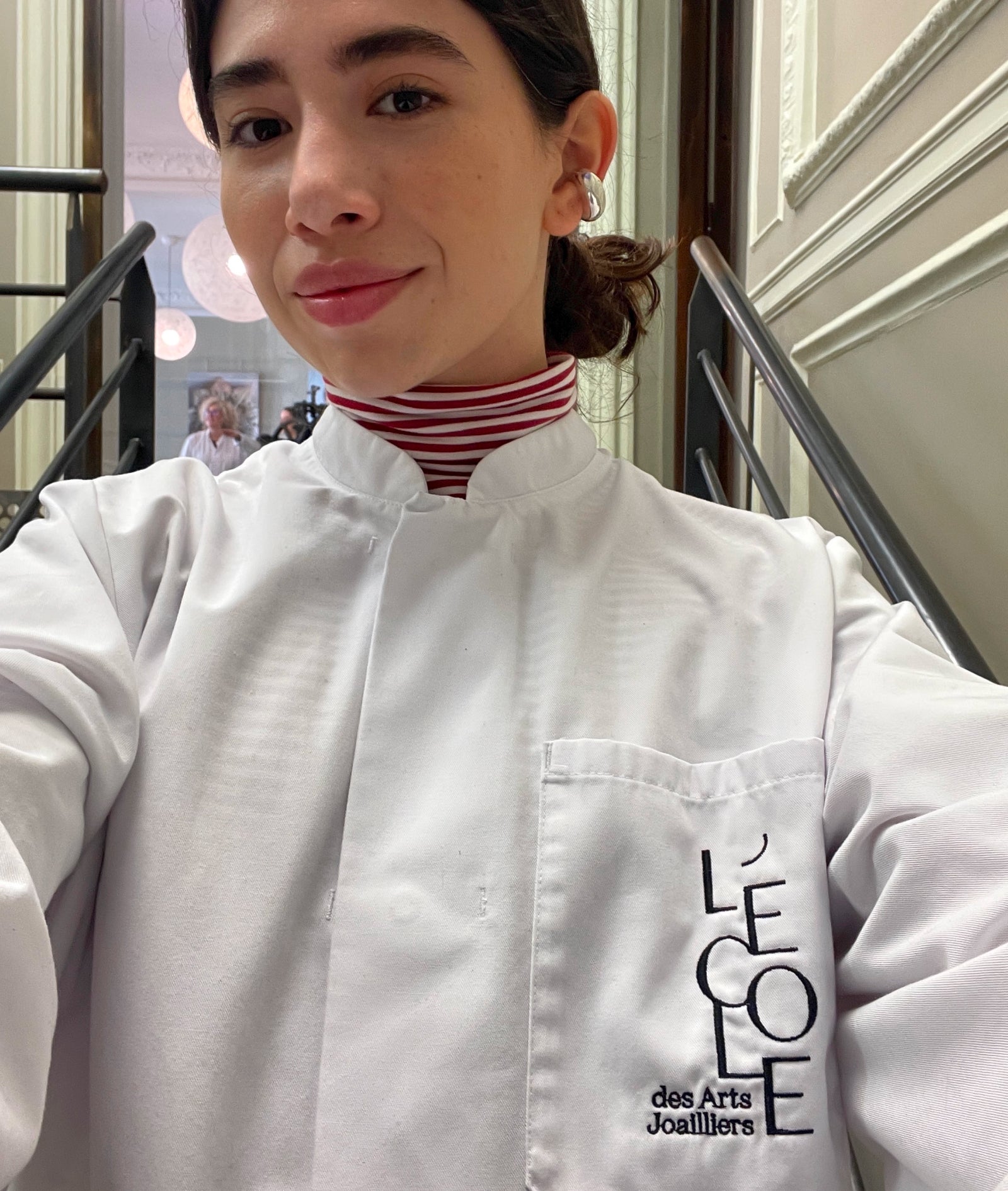
Cristina at L'École
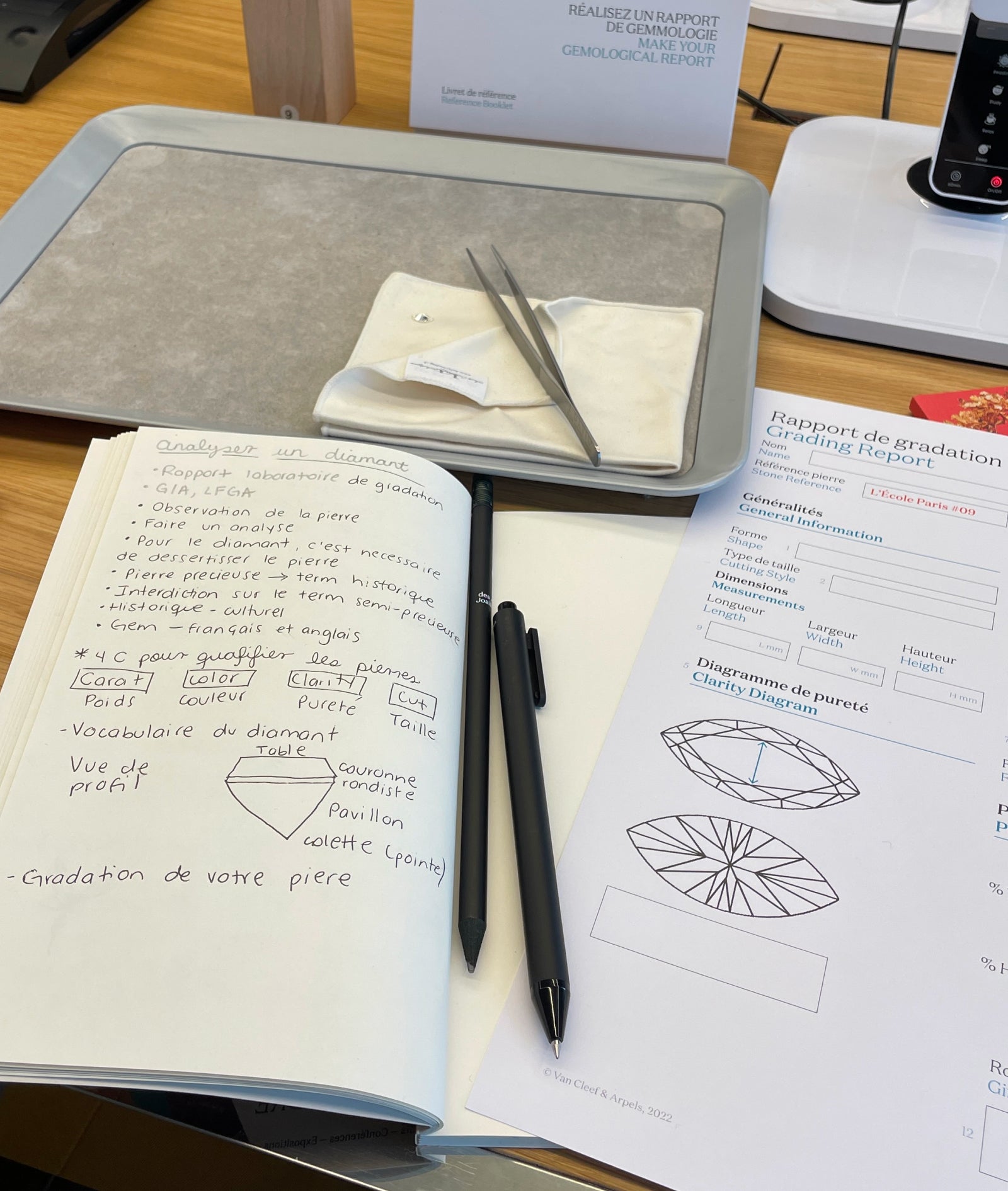
The 4C's of diamond grading
Analyzing a diamond
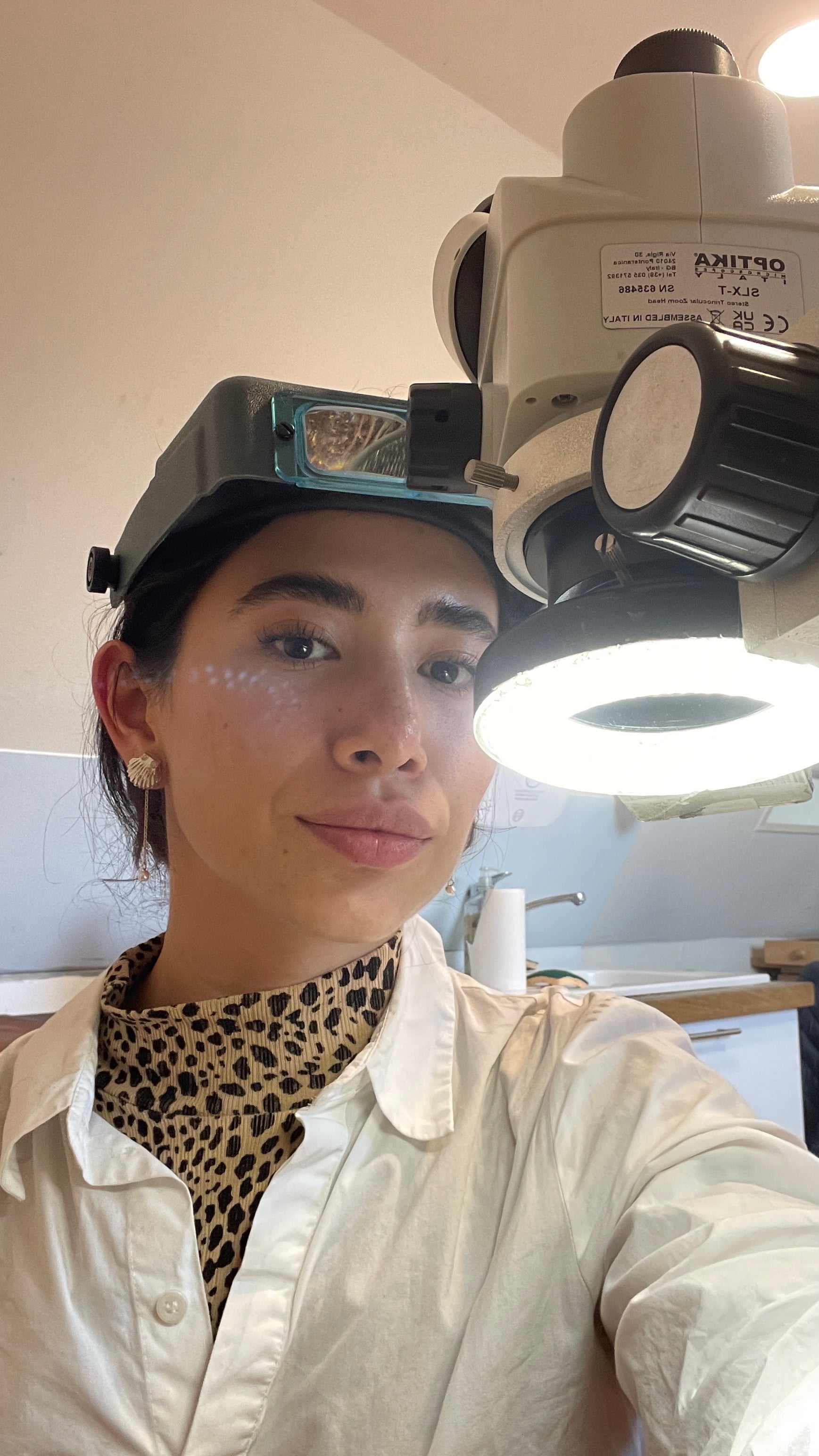
Cristina using a jeweler's microscope to set gemstones


